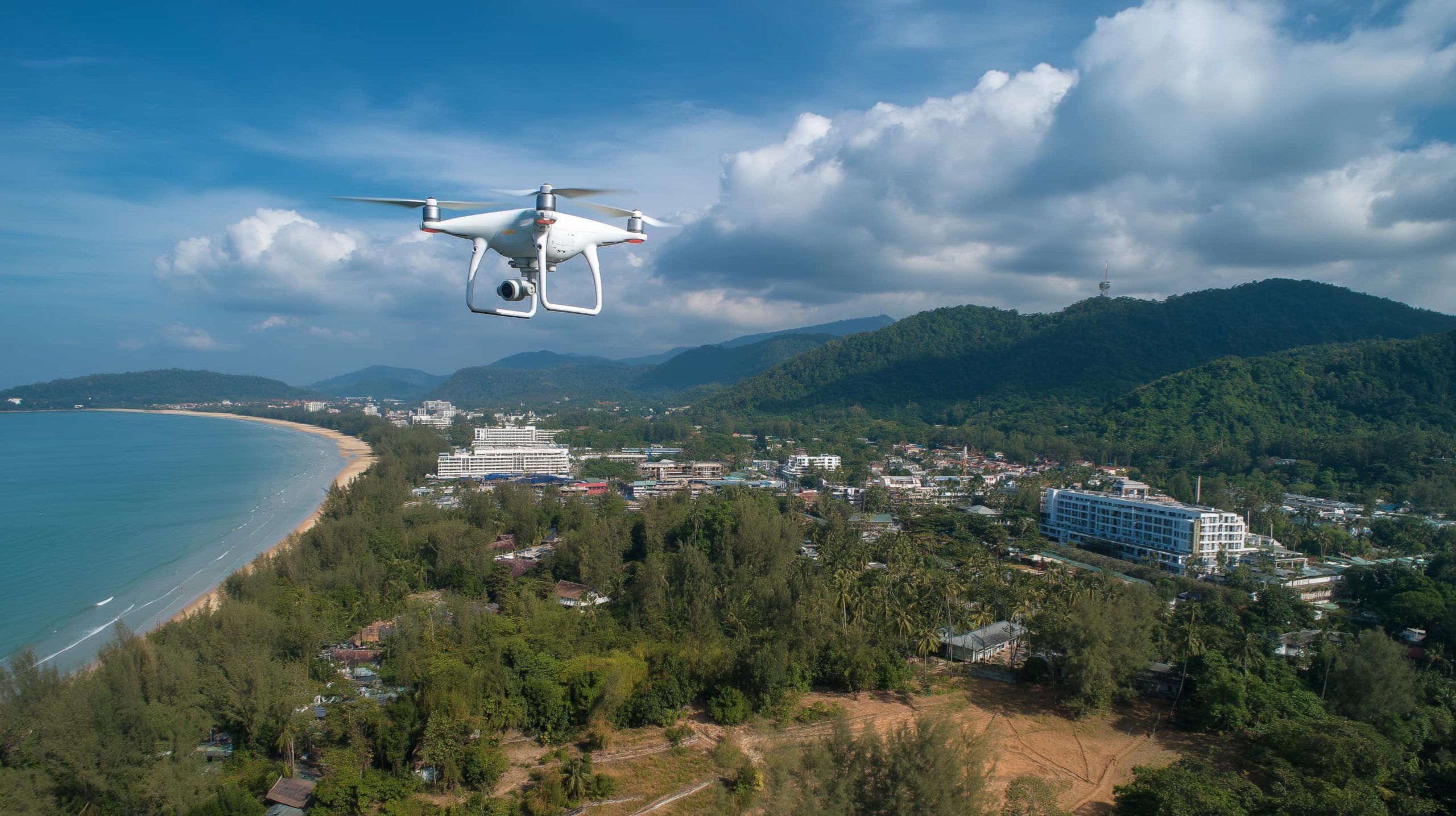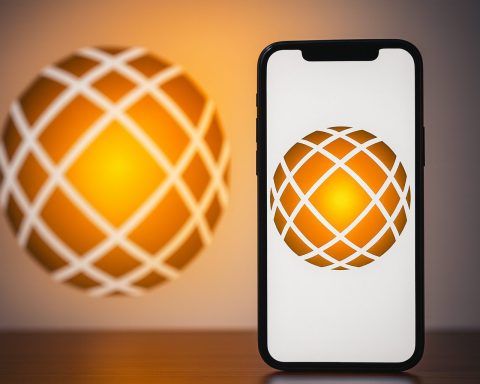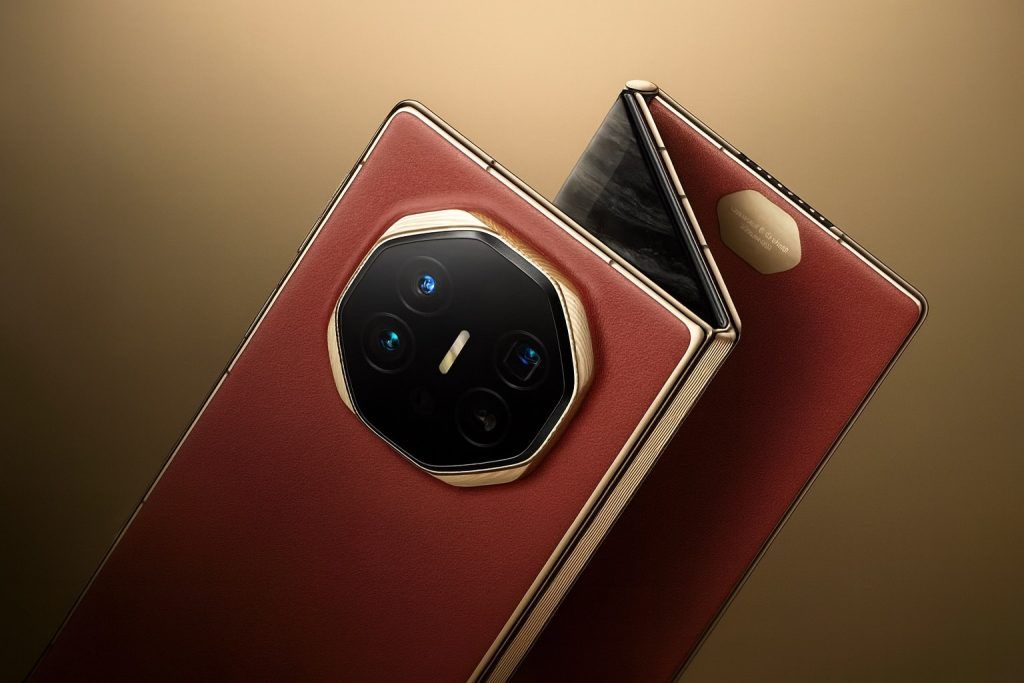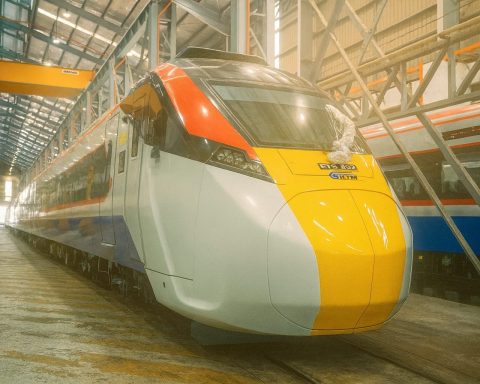- Mandatory Registration: All drones with a camera or over 250 grams must be registered with two Thai authorities – the Civil Aviation Authority of Thailand (CAAT) and the National Broadcasting and Telecommunications Commission (NBTC) – before you fly in Phuket [1] [2].
- Insurance & Licensing: Thailand requires drone operators to carry liability insurance (coverage ≥ ฿1 million) and to pass an online exam for a two-year drone pilot license prior to flying [3] [4].
- Strict Flight Rules: Drones can only be flown in daylight within line of sight, up to 90 m altitude. Keep at least 30 m away from people and never fly over crowds, cities, or near airports (9 km exclusion zone) without special permission [5] [6].
- No-Fly Zones: Phuket’s no-fly areas include a 9 km radius around Phuket International Airport, national parks (e.g. Sirinat National Park), and sensitive sites like temples, government offices, or military facilities [7] [8]. Always consult CAAT’s published restricted zones before flying [9].
- Heavy Penalties: Flying unregistered or in restricted areas is a criminal offense – penalties range up to ฿100,000 fines or 5 years in prison for failing to register with NBTC [10], and up to 1 year in jail or ฿40,000 fine for operating without CAAT approval [11]. Equipment can be confiscated for violations [12].
- Tourist Tips:Plan ahead – obtain drone insurance and prepare required documents before your trip. You must register your drone after arriving in Thailand (Thai SIM card and entry stamp needed) [13] [14]. Always carry proof of your CAAT/NBTC registrations when flying and respect local rules to enjoy Phuket’s skies safely [15] [16].
Overview of Drone Regulations in Thailand (Phuket)
Thailand enforces strict national drone laws that fully apply in Phuket, a popular destination for aerial photography. Since 2017, authorities have mandated registration of all drones or faced severe penalties [17]. The goal is to ensure public safety, privacy, and aviation security even as tourists and filmmakers capture Phuket’s stunning beaches and landscapes from above. Two agencies share oversight:
- Civil Aviation Authority of Thailand (CAAT): Regulates drone operations and pilot licensing (safety, airspace rules, operator competency). CAAT registration focuses on the person and aircraft, essentially issuing a drone pilot certificate and flight permission [18] [19].
- National Broadcasting & Telecommunications Commission (NBTC): Handles registration of the drone device and its radio frequencies. NBTC essentially registers you as an owner and your drone’s wireless equipment to avoid interference with other communications [20] [21].
In Phuket, you must comply with Thailand’s national drone law. This means obtaining the required permits and following all operational restrictions—there are no special exemptions for the island’s tourists. Flying a drone without adhering to these regulations is illegal and can result in fines, imprisonment, or confiscation of your drone [22] [23]. Fortunately, Thailand remains drone-friendly if you follow the rules. The next sections detail what you need to do to fly legally in Phuket.
Permit and Registration Requirements (CAAT & NBTC)
Before flying in Phuket (or anywhere in Thailand), drone owners must complete two registrations: one with CAAT and one with NBTC [24]. Additionally, third-party liability insurance is mandatory to register a drone. Below is what you need to know about each requirement:
- Drone Insurance: Obtain an insurance policy covering at least ฿1,000,000 in liability for your drone [25]. You will need an insurance certificate (in English, listing your name, drone model/serial, Thailand coverage, and coverage dates) to proceed with registration [26] [27]. Insurance can be bought from Thai providers online; basic plans cost ~฿750–1,600 depending on drone weight [28] [29].
- NBTC Registration (Drone & Owner):Within 30 days of entering Thailand, you must register your drone with NBTC – even if you haven’t flown yet [30] [31]. NBTC’s online portal (Anyregis) is used for this process. You’ll create an account and submit:
- A signed copy of your passport (with Thai entry stamp) and a local contact address (hotel booking) [32] [33].
- Details and photos of your drone (showing brand, model, serial number, and any installed camera) [34].
- A completed radio equipment registration form (the form is available on NBTC’s website) [35].
- Proof of insurance (the certificate obtained earlier).
- CAAT Registration (Drone & Pilot): Drones that weigh over 250 grams, carry a camera, or weigh over 2 kg must also be registered with CAAT [39] [40] (in practice, any camera drone meets this criteria). CAAT’s UAS online portal (recently consolidated in 2025) handles both the drone registration and the operator’s licensing [41] [42]. Key steps include:
- Account setup: You can only register once in Thailand because a local Thai phone number is required for OTP verification [43] [44]. Pick up a Thai SIM card (e.g. at Phuket airport) upon arrival.
- Pilot info and exam: You’ll submit personal details and then take a 40-question online test on drone regulations [45] [46]. This is a timed exam (covering safety rules, airspace, etc.). If you fail, you must wait 24 hours to retry [47]. Passing results in a Drone Pilot Certificate valid for 2 years [48] [49]. (You must be at least 20 years old with no serious criminal record to qualify as a drone operator [50].)
- Drone details: Provide your drone’s make, model, weight, and serial number, plus upload a photo showing the serial number [51] [52]. You’ll also upload your insurance certificate and a copy of your passport entry stamp [53].
- Approval & ID: CAAT will review your application (turnaround can be a few days up to 2 weeks) [54] [55]. Once approved, you receive a registration ID number for your drone (and digital certificates for you and the drone). You must label your drone with the CAAT registration number in at least 3 mm font [56]. CAAT registration has no fee and remains valid for 2 years (the drone ID can be reused on future trips) [57] [58]. Flying without CAAT registration (when required) risks up to 1 year in jail or a ฿40,000 fine [59].
Commercial use: If you intend to use a drone for commercial purposes in Phuket (e.g. paid videography, surveys, TV/film production), you must go beyond the standard registrations. Commercial operators need to obtain explicit permission from CAAT for their activities [60]. In practice, this may involve applying for a special operator’s license or permit from the Ministry of Transport, often called a UAV controller/launcher license [61]. Operators should be part of a legitimate business (media, film, etc.) and ensure they have any additional Remotely Piloted Aircraft Operator’s Certificate or other approvals if required [62] [63]. Always coordinate with CAAT well in advance for commercial projects – flying commercially without the proper permits can lead to legal trouble.
Key recent updates: As of June 30, 2025, CAAT has migrated all drone registrations to the new UAS Portal and shut down its legacy system [64]. Ensure you use the updated portal for any new or renewal registrations. (Operators with old certificates were advised to save their documents before the old system went offline [65].) Additionally, since 2021, NBTC’s process can be completed online (previously you had to visit an NBTC office) [66] – making it easier to register upon arrival. Regulations do evolve, so always double-check current requirements with CAAT/NBTC before your trip.
Rules and Restrictions for Drone Use (Recreational vs. Commercial)
Once you have your permits in order, you must strictly follow Thailand’s drone operating rules whenever you fly in Phuket. These rules apply to recreational hobbyists and commercial pilots alike (though commercial use may have additional constraints as noted). Below is an overview of the key restrictions:
- Visual Line of Sight (VLOS): You must keep your drone within direct eyesight at all times [67]. Using FPV goggles or camera-only navigation is not allowed unless a spotter is maintaining visual contact [68]. Never fly into clouds or fog where you lose sight of the drone [69].
- Altitude Limit: The maximum allowable altitude is 90 meters (295 feet) above ground level [70]. This is to prevent conflicts with manned aircraft. Exceeding 90 m is illegal unless you have explicit CAAT authorization for a special operation [71].
- No Night Flying: Operations are only permitted during daylight hours (sunrise to sunset) under good weather conditions [72]. Night flying is prohibited without special written permission from CAAT [73]. Plan your flights for between 06:00 and 18:00 local time [74].
- Keep Safe Distances: For small drones (<2 kg), maintain at least 30 m distance from people, buildings, vehicles, or structures not involved in the drone operation [75] [76]. For larger drones (2–25 kg), at least 50 m clearance is required [77]. Never fly directly over groups of people, public events, or congested areas where an out-of-control drone could injure someone [78] [79]. Even on Phuket’s beaches, avoid flying over sunbathing crowds or packed tourist spots for safety and privacy.
- Airports and Aircraft: Drones cannot be flown within 9 km (5 miles) of an airport or airfield without special permission [80]. Phuket International Airport on the north of the island is a no-fly zone in its vicinity. Also, always yield way to real aircraft – if you notice any low-flying helicopter or plane, descend immediately and land. It is illegal and extremely dangerous to fly near airports or flight paths [81]. (Phuket’s airport authorities have zero tolerance for drone interference due to safety risks.)
- Restricted Areas:Do not fly in restricted or sensitive zones such as near government buildings, royal residences, military bases, police stations, or hospitals [82] [83]. These locations are considered security-sensitive. For example, flying over a police station or a military facility in Phuket could get you detained. Always seek permission if you truly need to operate in such areas (which is rarely granted for obvious reasons).
- Privacy and Courtesy: Thai law and customs require respecting others’ privacy. You must not use drones to spy on or disturb people [84]. Avoid flying low over private property, hotel pools, or anywhere you might infringe on someone’s privacy without consent. In Phuket’s more crowded spots, it’s courteous to ask permission from property owners before takeoff/landing on their premises [85]. (Legally, you should have the landowner’s permission to take off and land [86], so using a hotel’s beach or a private resort for drone launch should be cleared with management.)
- Emergency Preparedness: Uniquely, Thai regulations suggest having an emergency plan and basic safety gear on hand [87]. This can include carrying a small fire extinguisher and first aid kit when flying, especially for commercial operators. While hobbyists aren’t usually checked for this, it underscores that you should be prepared to handle crashes or accidents. Always fly in a manner that does not endanger people or property [88] – reckless flying can lead to legal liability if an accident occurs.
Additional rules include not carrying hazardous materials or dropping objects from the drone [89]. Commercial drone users must follow all the above rules and, as noted, obtain any extra permits required for their operations. The main difference for commercial flights is ensuring you have that operations license from the Ministry of Transport and any necessary flight authorizations per mission [90]. Commercial pilots should also keep a log of their flights and be even more diligent with safety protocols.
By following these rules, you can avoid incidents and enjoy flying over Phuket’s beautiful scenery without trouble. Always use common sense: if a location or situation seems questionable, err on the side of caution or seek official guidance. The drone community in Thailand wants to maintain a good reputation, so operating responsibly is in everyone’s interest [91].
No-Fly Zones and Airspace Restrictions in Phuket
Phuket’s allure is its natural beauty – from turquoise beaches to lush hills – but not every scenic spot is open to drones. It’s critical to know the no-fly zones (NFZs) in and around Phuket to avoid accidentally breaking the law. The following are key restricted areas:
- Airports: Phuket International Airport (HKT) is the island’s main airport, located in the northwest. A 9 km radius around the airport is strictly off-limits to drones without special permission [92] [93]. This essentially covers areas like Mai Khao Beach (famous for plane-spotting) – do not attempt to fly there, as doing so could endanger aircraft landings and will lead to arrest. Also be mindful of any helipads or smaller airstrips; while Phuket doesn’t have a second commercial airport, if there are temporary airfields or helipads (for hospitals or tours), those also require a wide berth of 9 km [94].
- National Parks: Phuket and its surrounding provinces have protected national parks where drone flights are generally prohibited without special permission. For example, Sirinat National Park, which overlaps the area just south of Phuket’s airport (and includes Nai Yang beach and forest areas), is a no-fly zone due to environmental protection – drones can disturb wildlife in these areas [95]. Marine parks reachable from Phuket, like the Similan Islands National Park or Phi Phi Islands (a part of a national park), also ban drones unless you have explicit authorization from park authorities [96]. These rules are meant to preserve wildlife and tranquility. Tip: If you wish to drone in a national park, you must apply for a permit from the National Parks office; even then, permits are rarely granted and you must show your CAAT/NBTC registration documents [97]. Recent reports in 2023–2024 suggest authorities may allow registered, insured pilots to fly in some parks with proper documentation [98], but you should always confirm locally and assume it’s off-limits unless told otherwise.
- Temples and Cultural Sites: Out of respect and security, many important cultural or religious sites are no-drone zones. Phuket’s iconic Big Buddha statue, for instance, sits on a hilltop temple (Wat Phra Yai) – this area is considered sensitive, and although tourists have attempted to fly there, it is technically forbidden [99]. Local officials or signs might explicitly ban drones at such temples. Always seek permission from temple authorities if you feel a drone shot is necessary (in most cases they will say no, or only allow it at very specific times). Other popular temples or monuments around Phuket (Wat Chalong, etc.) may have similar restrictions. The rule of thumb is to avoid flying over any temples, shrines, or religious gatherings as it can be seen as intrusive or disrespectful.
- Government and Military Zones: Phuket has various government installations (e.g. district offices, police stations) and possibly some small military or naval facilities. All of these are off-limits for drone flights [100]. You should not fly near Phuket City Hall, police headquarters, courts, or prisons. Likewise, if there’s a military base or a royal villa, keep well away. These locations may not always be obvious to tourists, so it’s wise to use tools (see below) to identify restricted airspace. Remember that violating security-related no-fly zones can have serious consequences, and authorities will not be lenient in such cases.
- Urban and Crowded Areas: While not a labeled “no-fly zone” on maps, flying over densely populated urban areas (like downtown Phuket City or Patong’s nightlife district) is prohibited by rule (no flight over assemblies of people) [101] [102]. Essentially, any city or town area where if your drone fell it could hit people or vehicles is off-limits. Phuket’s popular beaches can become crowded – flying over tightly packed beachgoers (for example, a full Patong Beach on a holiday) would violate regulations. It’s best to fly in more isolated spots or when people are not present (e.g. sunrise flights over a beach with few people). Use common sense: if an area seems busy on the ground, do not fly above it.
Checking for No-Fly Zones: To stay safe, always consult updated resources. The CAAT provides maps and an Aeronautical Information Publication (AIP) listing restricted zones [103]. The CAAT UAS Portal app/website allows you to view approved flying areas; as a user, you can verify if your planned flight location is clear or falls in restricted airspace [104]. Additionally, third-party drone map apps (like AirMap or UAV Forecast) often show Thailand’s no-fly zones. Before each flight, double-check your location. If you’re near a national border or other sensitive area, be extra cautious – for instance, temporary bans have been enacted during security events (in August 2025, drone flights were temporarily banned in some Thai provinces due to border security concerns [105]). Phuket isn’t a border province, but this underscores the need to stay informed about any local notices or temporary restrictions.
In summary, Phuket offers many drone-friendly vistas, but always steer clear of the obvious no-fly zones: airports, national parks, government/military sites, and anywhere crowded or sensitive. When in doubt, don’t fly – or ask local authorities for guidance. Respecting these limits not only keeps you legal but also protects Phuket’s environment and community from potential harm.
Penalties and Legal Consequences for Violations
Thailand’s drone laws carry strict penalties to deter irresponsible flying. If you violate the regulations discussed – whether by not registering, flying in restricted zones, or endangering others – you risk severe legal consequences. Here are the main penalties to be aware of:
- Failure to Register (NBTC): Operating (or even possessing) an unregistered drone in Thailand is a crime. NBTC, which handles the mandatory drone registration for all drones, imposes a penalty up to ฿100,000 (around US$3,000) or up to 5 years imprisonment, or both, for non-registration [106]. Thai law enforcement does conduct random checks; if you cannot produce proof of NBTC registration for your drone, you could be arrested. Note that NBTC requires registration within 30 days of arrival even if you don’t fly immediately [107] – so you cannot legally “wait and see.” Always register in time to avoid this hefty punishment.
- Failure to Register (CAAT): Similarly, if your drone meets the criteria for CAAT registration (which covers virtually all camera drones), not having CAAT approval is also illegal. Flying without the CAAT drone certificate/pilot license can lead to up to 1 year in prison or a ฿40,000 fine under aviation law [108]. Authorities can charge you under the Air Navigation Act for operating an aircraft (drone) without permission. In addition to legal penalties, you will almost certainly have your drone confiscated if caught flying unregistered [109], and you may be blacklisted for future permits.
- Flying in No-Fly Zones: Violating no-fly zone rules (e.g. flying near an airport, in a national park without permission, or over a crowd) can result in immediate intervention by police or military. At minimum, you may face fines or charges similar to the above (since such an act also implies you’re not following CAAT regulations). If you fly in an airport zone or interfere with manned aircraft, you could face very serious charges under aviation security laws, potentially far exceeding the basic fines. For example, endangering an aircraft could involve charges with sentences of several years in prison. It’s not theoretical – Thai authorities have zero tolerance for drones near airports.
- Injury or Property Damage: If your drone operation causes an accident – for instance, crashing into someone and causing injury or damaging property – you are liable for civil damages and possibly additional criminal charges (such as negligence). Having insurance (which is required) will cover civil claims up to the policy limit, but it does not shield you from criminal responsibility. You could be fined or sued for medical costs, repairs, etc. Always fly carefully to avoid any incidents.
- Privacy Violations: Using a drone to record someone in a private setting without consent could run afoul of privacy and harassment laws. While Thailand doesn’t have specific “drone privacy” statutes, general laws (and personal rights) apply. Authorities may treat it as a disturbance of the peace or similar offense. At tourist sites, there have been complaints leading to police asking drone operators to stop filming people. It’s best to avoid any scenario that might be construed as spying or nuisance.
- Customs and Import Violations: This is rare, but if you bring multiple high-end drones into Thailand or a drone in commercial packaging, customs might suspect you are importing for sale. In such cases, if you lack proper import permits, you could face fines for evading import duties or violating NBTC import rules (NBTC requires import permission for drones with cameras) [110]. Tourists with a single personal drone usually have no issues at customs, but it’s something to keep in mind – unregistered drones are not technically allowed, even in luggage.
Enforcement in Phuket: Phuket, being a major tourist hub, has a visible police presence and even “tourist police.” They are aware of drone regulations. If you fly in a sensitive area, locals or other tourists might report it. Police have the authority to ask for your drone registration documents. If you cannot produce them, expect the drone to be seized on the spot. As a foreigner, you could be detained and face legal proceedings, which could ruin your holiday and carry heavy costs. In short, the stakes are high – do not risk flying illegally.
One notable enforcement example: In past years, individuals flying near airports or over restricted events in Thailand have been arrested to “make an example.” The laws are real and enforced. However, if you follow the rules, Thai officials are generally supportive of drone hobbyists – you’ll join many others who legally enjoy capturing Phuket’s beauty from above. It only becomes a problem if you ignore the requirements or fly recklessly.
If you’re unsure about any rule, don’t take chances. Consult the CAAT or local authorities first. It’s better to miss a shot than to face legal trouble abroad. Remember that ignorance of the law is not a valid defense; authorities provide resources in English (via CAAT, NBTC, and embassy advisories) so all visitors are expected to know and comply with the drone laws.
Tips for Tourists Flying Drones in Phuket
Flying a drone in Phuket can be a highlight of your trip if done right. Here are some practical tips to ensure a smooth and legal experience for tourist drone pilots:
- Start Early and Plan Ahead: Don’t leave registration to the last minute. Begin the insurance and paperwork process a few weeks before your trip. While you cannot fully complete registration until you arrive (due to the Thai SIM and entry stamp requirements), you can prepare all documents in advance [111] [112]. Fill out your NBTC account details online ahead of time, and study for the CAAT exam (review the Thai drone rules). This way, once you land in Phuket, you can quickly get a SIM card and finalize registrations within a day or two [113].
- Use a Registration Service (If Needed): If the process sounds daunting, consider using a drone registration service. There are companies in Thailand that, for a fee, will handle the NBTC paperwork and guide you through CAAT registration [114] [115]. Some even bundle this with insurance. This can save time, especially if you’re on a short vacation. (For example, services charge roughly ฿1,500 and can often get all permits by the day after your arrival [116].) Whether you DIY or use a service, do not skip the legalities – it’s worth it for peace of mind.
- Always Carry Your Documentation: Keep digital and/or printed copies of your NBTC certificate, CAAT drone certificate, and pilot license with you when flying [117]. If approached by police or park rangers, you should be able to show proof that you’re authorized. Having the documents handy can prevent misunderstandings. It’s also smart to have a copy of your insurance policy and passport. Some users even laminate a copy of the permits or stick the registration ID on the drone to make it obvious.
- Fly During Off-Peak Times: To avoid issues with crowds and to get the best footage, fly early in the morning or around sunset (keeping within legal daylight times). Phuket’s beaches like Patong, Karon, or Kata are much quieter at dawn – you can capture stunning shots with minimal people around, which keeps you within rules (no crowds) and avoids bothering tourists. Plus, softer lighting is great for video. Just make sure you land before it gets dark.
- Choose Safe Launch Sites: Find an open area to take off and land where you have permission. For beaches, the public shoreline is usually fine if not crowded. For other spots, ask property owners if on private land. Do not launch from roadsides or near power lines. Phuket has windy conditions at times, so pick a location with a clear buffer zone in case the drone drifts. Stay clear of any known wildlife zones where a drone might disturb animals (e.g. avoid flying low over coral reefs with birds or near elephant sanctuaries, etc.).
- Respect Local Regulations and Customs: Beyond just the written law, be mindful of local sentiments. For instance, if you’re at a small beach and locals seem uncomfortable with the drone, consider stopping. When visiting temples or cultural festivals, it’s usually inappropriate to fly a drone, even if not explicitly banned. Always ask when in doubt. Thai people are generally friendly, and asking politely can go a long way – they might suggest a better time or spot for you to fly.
- Monitor Weather and No-Fly Alerts: Phuket’s weather can change quickly, especially in monsoon season. Don’t fly in rain or high winds for safety. Use a weather app and the CAAT drone app to check for any airspace alerts. For example, if there’s an VIP visiting or a special event, ad-hoc drone restrictions might pop up. Also, avoid flying near thunderstorms – aside from danger, your drone could be affected by strong winds or even get struck by lightning.
- Drone Maintenance: Tropical weather can be harsh on electronics. Keep your drone batteries, motors, and sensors in good condition. Allow your drone to acclimate if coming from an air-conditioned hotel to the humid outdoors (to avoid lens fog). This isn’t a legal tip per se, but a malfunction mid-flight could lead to an accident (and then legal consequences). So make sure your drone is flight-worthy each time.
- Engage with the Drone Community: There are online forums (Facebook groups, etc.) and local meetups for drone enthusiasts in Thailand. Connecting with others can provide up-to-date insights. They might share which areas in Phuket are best for flying and which areas to avoid due to recent enforcement. Fellow pilots can also help if you face any technical or bureaucratic challenges.
- Backup Plan if Short on Time: If your trip is very soon and you only learned about the registration requirement last-minute, you have a tough choice. It is not recommended to fly without registration. Instead, you could bring your drone and not fly until you register. If you absolutely cannot register in time, it’s wiser to leave the drone at home than to risk illegal flight. (Thai authorities won’t accept “I didn’t know” as an excuse.) You can still enjoy aerial views in Phuket through licensed tour operators or stock footage if needed. But ideally, try to get legal – Thailand’s processes have improved and can be done relatively fast now [118].
- Stay Updated: Finally, keep an eye on official sources for any changes. Drone laws can evolve – for instance, in 2025 there were temporary security measures affecting drones [119], and technology changes could bring new rules (like remote ID requirements in the future). Before you travel, check the CAAT website or TAT (Tourism Authority) advisories for drones to see if any new restrictions or announcements are in effect. When in Phuket, local news or your hotel concierge might also know if any drone bans are currently active (sometimes during royal visits or events, drones are restricted).
By following these tips, you’ll greatly reduce the likelihood of any problems. Many tourists successfully fly drones in Phuket each year, coming home with incredible photos and videos – and they do so by respecting Thailand’s laws and local communities. Flying legally and considerately ensures that Thailand remains welcoming to drone enthusiasts. Happy flying, and enjoy capturing the beauty of Phuket from the skies!
References:
- Drone & DSLR – “Drone Laws in Thailand (Updated August 2025)” [120] [121]
- TAT News – “Flying a Drone in Thailand – Updated Guide for Tourists” (August 2025) [122] [123]
- FEIC (Thailand) – “NBTC Thailand Drone Registration” [124] [125]
- Drone-Traveller – “Drones in Thailand 2025: Laws and Registration” [126] [127]
- Thai Embassy (Stockholm) – “Registration for drones brought on holiday to Thailand” [128] [129]
- Drone-Laws.com – “Thailand Drone Laws 2025” [130] [131]
- Medium (Sulman Khan) – “Can You Fly a Drone in Phuket?” (Sept 2024) [132] [133]
- TAT News – Drone flight restrictions notice (Aug 2025) [134] [135]
- Juslaws & Consult – “How are drones regulated in Thailand?” [136] (Commercial use overview)
- Drone & DSLR – Personal experience in Phuket [137] [138] (Anecdotes & advice)
References
1. droneandslr.com, 2. www.tatnews.org, 3. www.tatnews.org, 4. drone-traveller.com, 5. drone-laws.com, 6. drone-laws.com, 7. sulmanofficial.medium.com, 8. sulmanofficial.medium.com, 9. droneandslr.com, 10. www.feic.co.th, 11. drone-traveller.com, 12. sulmanofficial.medium.com, 13. www.feic.co.th, 14. www.feic.co.th, 15. droneandslr.com, 16. droneandslr.com, 17. thaiembassy.se, 18. drone-laws.com, 19. drone-laws.com, 20. www.feic.co.th, 21. www.feic.co.th, 22. www.tatnews.org, 23. www.tatnews.org, 24. drone-laws.com, 25. www.tatnews.org, 26. drone-traveller.com, 27. drone-traveller.com, 28. droneandslr.com, 29. droneandslr.com, 30. www.feic.co.th, 31. www.feic.co.th, 32. www.feic.co.th, 33. www.feic.co.th, 34. www.feic.co.th, 35. www.feic.co.th, 36. drone-traveller.com, 37. www.feic.co.th, 38. www.feic.co.th, 39. droneandslr.com, 40. drone-laws.com, 41. www.tatnews.org, 42. www.tatnews.org, 43. www.feic.co.th, 44. www.feic.co.th, 45. www.feic.co.th, 46. drone-traveller.com, 47. www.feic.co.th, 48. drone-traveller.com, 49. drone-traveller.com, 50. drone-laws.com, 51. sulmanofficial.medium.com, 52. drone-traveller.com, 53. drone-traveller.com, 54. drone-traveller.com, 55. www.feic.co.th, 56. www.tatnews.org, 57. drone-traveller.com, 58. drone-traveller.com, 59. drone-traveller.com, 60. thaiembassy.se, 61. drone-laws.com, 62. www.juslaws.com, 63. www.juslaws.com, 64. www.tatnews.org, 65. www.tatnews.org, 66. www.feic.co.th, 67. drone-laws.com, 68. www.tatnews.org, 69. www.tatnews.org, 70. www.tatnews.org, 71. www.tatnews.org, 72. drone-laws.com, 73. www.tatnews.org, 74. www.tatnews.org, 75. www.tatnews.org, 76. drone-laws.com, 77. www.tatnews.org, 78. www.tatnews.org, 79. drone-laws.com, 80. drone-laws.com, 81. www.tatnews.org, 82. www.tatnews.org, 83. sulmanofficial.medium.com, 84. thaiembassy.se, 85. drone-laws.com, 86. drone-laws.com, 87. drone-laws.com, 88. www.tatnews.org, 89. www.tatnews.org, 90. drone-laws.com, 91. droneandslr.com, 92. www.tatnews.org, 93. drone-laws.com, 94. drone-laws.com, 95. sulmanofficial.medium.com, 96. sulmanofficial.medium.com, 97. mavicpilots.com, 98. mavicpilots.com, 99. droneandslr.com, 100. sulmanofficial.medium.com, 101. www.tatnews.org, 102. drone-laws.com, 103. droneandslr.com, 104. www.tatnews.org, 105. www.tatnews.org, 106. www.feic.co.th, 107. www.feic.co.th, 108. drone-traveller.com, 109. sulmanofficial.medium.com, 110. www.juslaws.com, 111. drone-traveller.com, 112. drone-traveller.com, 113. drone-traveller.com, 114. www.feic.co.th, 115. www.feic.co.th, 116. drone-traveller.com, 117. droneandslr.com, 118. drone-traveller.com, 119. www.tatnews.org, 120. droneandslr.com, 121. droneandslr.com, 122. www.tatnews.org, 123. www.tatnews.org, 124. www.feic.co.th, 125. www.feic.co.th, 126. drone-traveller.com, 127. drone-traveller.com, 128. thaiembassy.se, 129. thaiembassy.se, 130. drone-laws.com, 131. drone-laws.com, 132. sulmanofficial.medium.com, 133. sulmanofficial.medium.com, 134. www.tatnews.org, 135. www.tatnews.org, 136. www.juslaws.com, 137. droneandslr.com, 138. droneandslr.com










